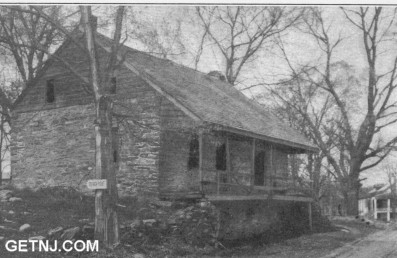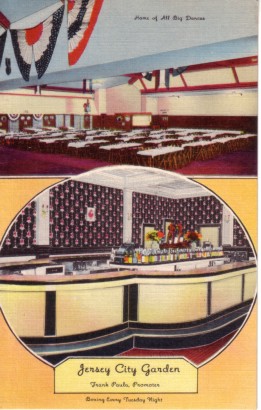 |  |  |
|
| ||
 |  |  |
 |  |  |
|
| ||
 |  |  |
|
|
From Historic Roadsides of New Jersey by The Society of Colonial Wars in the State of New Jersey, 1928
Edited by GET NJ, COPYRIGHT 2002
Northwestern County of the State. It was organized
June 8, 1753, from a portion of Morris County. During
French and Indian Wars the settlements on the upper Delaware were subject to Indian incursions. In November, 1755,
Colonel John Ruderson, with the Sussex Militia, sent to the
Moravian Missionaries at Bethlehem for powder and was refused, but the powder was later furnished on threat to burn the
town. When the Indians destroyed Gnadenhutten in Pennsylvania, the Sussex Militia went to assist the people of the back
settlements and forts were built at Broadheads, Colverts Mills,
and other places for defence of Sussex County. In May, 1756,
the Indians appeared in Paulis Kill, Sussex County, and the
Colony denounced the Lenni-Lenape as enemies, rebels, and
traitors because of treaty violation. In the pre-Revolution days
the Sussex delegates to Colonial Congress opposed the resolutions relative to Governor William Franklin July 16, 1774.
The freeholders of Sussex County met at Newton and adopted
resolutions expressing allegiance to the Crown and urging the
repeal of the Boston Port Bill and offering to become parties to
redress the grievances of the Colonies. Early in the struggle, a
Tory Association was organized in Sussex County, the members of which resolved not to pay the taxes levied by the
Province or to attend militia musters. In August, 1776, it was
reported to Congress that a search for lead mines in Sussex
County had disclosed "Symptoms thereof" about four miles
from Newton and flints "exceeding promising" near Beaver
Run, Sussex County.
"The Farmers Journal and Newton Advertiser" was published in Sussex County 1796-98 by Elliot Hopkins and
William Houston.
In Sussex, the slave population in 1790, was one forty-fifth. In 1820 the County was the most populous in the State.
Zinc, lead and other minerals of commercial importance are
found in the County.
NEWTON
ANDOVER WORKS
HAMBURG
SWARTWOUT'S POND
OLD MINE ROAD
County Seat. Sixty-eight miles from Trenton.
Court House here authorized by Act of 1761.
Two miles south of Newton in region of Big and Little
Muckshaw is Moody's Rock. Site of hiding place of Bonnell
Moody, a noted Tory, and his followers. Tradition says that
Moody was captured in the American Ranks near Morristown
and hung as a spy.
Six miles south of Newton on direct
road to Newark. Steel mill and iron works or smelter built
1761, operated by the English, taken possession of by order of
Continental Congress 1778, furnishing iron and steel to the
Continental Army. Tradition says that the Hudson River
chain was produced at Andover Forge
Six miles north of Franklin, 12 miles north-east of Newton.
Monument near Lawrence Homestead marking encamp-
ment of Washington's Army on March from Newburg to
Morristown. Monument erected by Marquise Ellen Kays McLaughlin, a member of the Chinkchewanska Chapter, D.A.R.
Named from Swartwout, an officer
in British Colonial Service obnoxious to the Indians because of
his activities. Scene of Indian Massacre in which Swartwout
was slain.
Constructed by the Dutch, who oper
ated the mines about 1650. In Sussex County, at Port Jervis,
it passes through a brick house and the village of Minnisink,
parallel to the Delaware River. It begins at Kingston, New
York.

MINNISINK
Minnisink was the scene of Battle of Minnisink, July, 1781, with the Indians, commanded by Brant. West,
brook House or Fort. Oldest house in Sussex County. Family
living in Minnisink as early as 1701.
FLATBROOKVILLE
Van Campen Inn. Stopping place of
John Adams, second President of the United States.
|
The Historic Roadsides in New Jersey Table of Contents |
|


|
UrbanTimes.com |